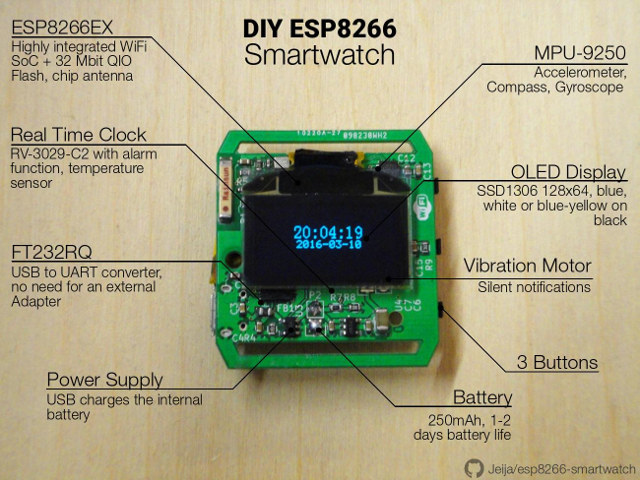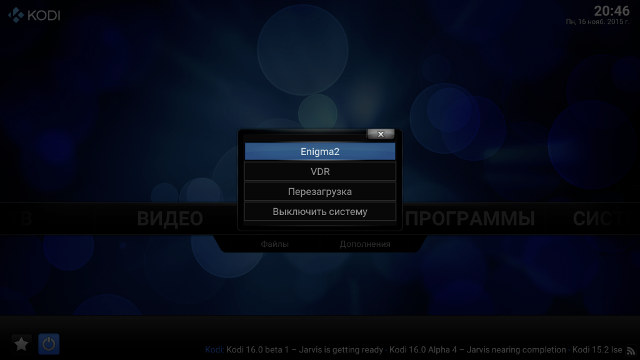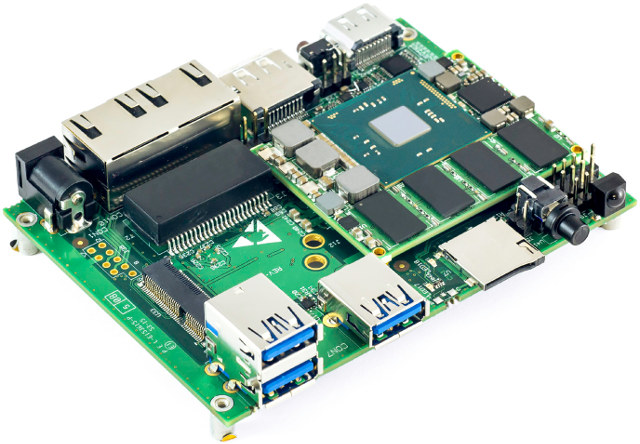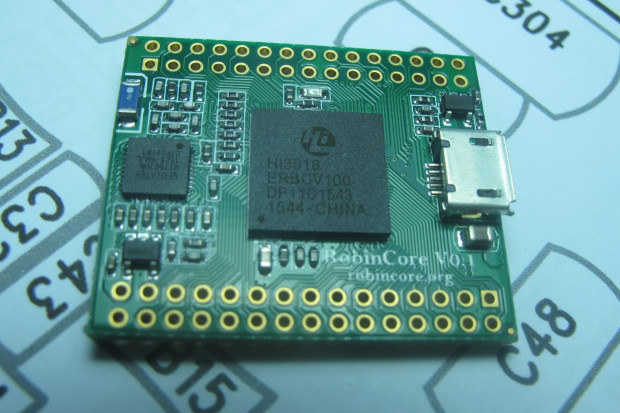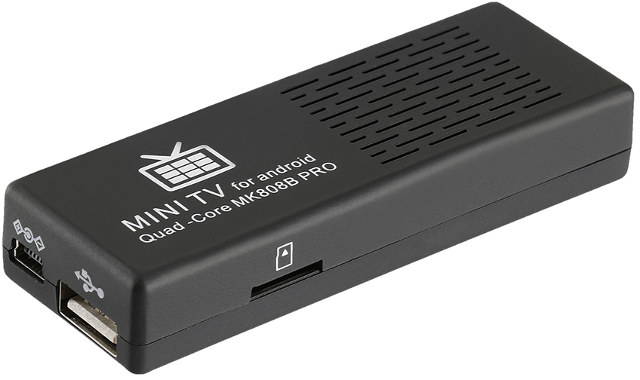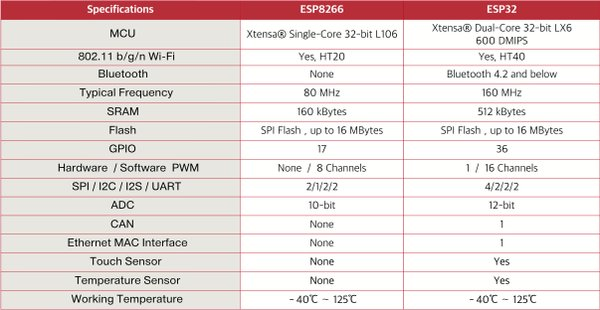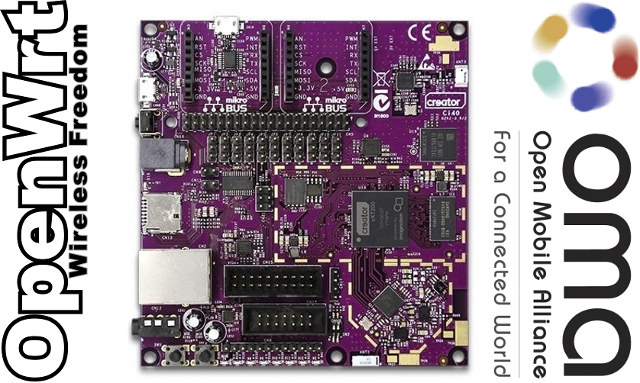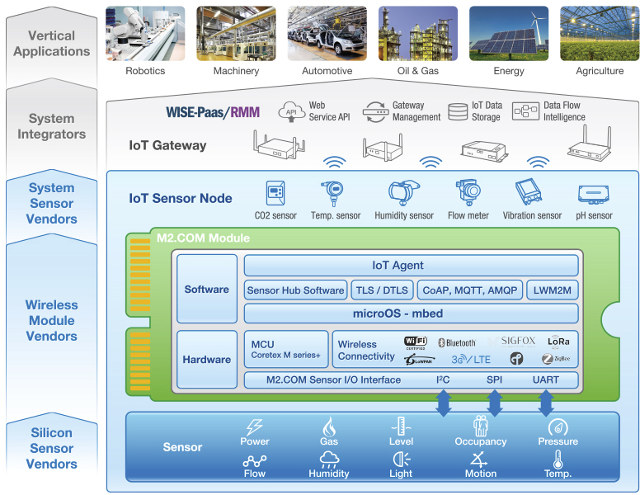ESP8266 might be the cheapest WiFi SoC for IoT application available, but it’s not really renowned for its power efficiency, and is often not considered the best choice for battery powered applications. This has not stopped Jeifa from developing a WiFi smartwatch based on the chip, and the 250 mAh battery used in the design is said to be good enough for 1 or 2 days of operation on a charge. Main components of Jeija’s ESP8266 smartwatch: SoC – Espressif ESP8266 with 32Mbit of flash memory Display – SSD1306 OLED Display, 128×64 resolution Connectivity – 802.11 b/g/n WiFi (via ESP8266) Sensor – Invensense MPU-9250 gyroscope, accelerometer, and compass Debugging / Programming – FT232RQ for USB communication Misc RV-3029-C2 Real Time Clock with alarm function, and temperature sensor 3x user buttons Vibration Motor Power 250mAh LiPo battery MCP73831 LiPo charger Dimensions – 35 x 39 x 11mm (board) He designed the […]
OpenELEC (Vitmos OS) for VideoStrong/Venz K1 Plus Android DVB Receiver
Many recent TV boxes with digital TV tuner ship with Android, and run a custom DTV app to watch live TV. However, most ships without Dolby and DTS licenses, so you may end-up without audio for channels broadcasted with AC3 audio only, and if you’ve gotten used to Kodi TV interface previously you may want use it again. One workaround is to have Tvheadend or CESBO media server running in the device, and configure Kodi to use Tvheadend HSTP client to stream the video within your device. I’ve tested such video streaming on U4 Quad Hybrid recently since it’s enabled by default, but there’s no guarantee it would work with all Android DVB receivers. Another options is run version of OpenELEC with support for tuners, such as Vitaley S’ Vitmos 2.0 RC3 for Venz/VideoStrong K1 Plus based on Amlogic S905 processor. [Update: Vitmos 2.0 RC5 for K1 Plus DVB Combo […]
SolidRun Introduces Intel Braswell MicroSoMs, and SolidPC Q4 Carrier Board
SolidRun has been making ARM based MicroSoMs – tiny system-on-module – for a while, and integrated them in many of their boards such as HummindBoard Edge or ClearFog Pro, and now the company has packed Intel Braswell processors into 52.8 x 40mm MicroSoMs that can be plugged into SolidPC Q4 carrier board. Two Braswell MicroSoM module have been designed so far: SoM IB8000 and SoM IB3710, which beside having different SoCs, and memory options share most of the same specifications: SoC SoM IB8000 – Intel Atom x5-E8000 quad core processor @ 1.04 / 2.0 GHz with 12EU Intel HD graphics @ 320/600 MHz (5W TDP) SoM IB3710 – Intel Pentium N3710 quad core processor @ 1.6 / 2.56 GHz with 16EU Intel HD graphics 405 @ 400/700 MHz (6W TDP) System Memory SoM IB8000 – 1GB (single channel), 2GB, 4GB or 8GB (dual channel) SoM IB3710 – Up to 8GB (default size) […]
$15 RobinCore WiFi IoT Module Runs OpenWrt, Supports 720p Video Encoding (Crowdfunding)
Do you remember VoCore? It was a low cost OpenWrt WiFi IoT module based on Mediatek RT5350 processor, that had a very successful crowdfunding campaign managed by a single developer, and the project is still going strong with VoCore2 being in the works. Another developer had the idea of doing something similar but based on HiSilicon Hi3518 ARM9 processor with more memory and support for 720p video encoding making it suitable for HD drone camera, compact video cameras, and so on. Meet RobinCore. RobinCore specifications: SoC – Hisilicon Hi3518E ARM926 processor @ 440MHz with H.264 encoder(720p@30fps) System Memory – 64MB DDR2 Storage – 16 MB NOR flash Connectivity – 802.11 b/g/n WiFi via Mediatek MT7601U with on-board chip antenna Debugging – micro USB port Expansion – 2x 30-pin 2.0mm pitch through holes with access to 10/100M Ethernet, UART, I2C, SPI, SDIO, ADC, PWM, JTAG and GPIOs Power Support – 5V […]
$35 MK808B PRO 4K HDMI TV Stick is Powered by Amlogic S905 Processor
MK808 family of Android TV sticks has been relatively popular starting with MK808 & MK808B based on Rockchip RK3066 dual core processor, followed by MK808B Plus with Amlogic S805 quad core processor, and now MK808B PRO has been launched with the same form factor but featuring an Amlogic S905 64-bit processor combined with 1GB RAM and 8GB storage. MK808B PRO specifications: SoC – Amlogic S905 quad core ARM Cortex-A53 @ up to 2.0GHz with quad core Mali-450MP GPU up to 750MHz System Memory – 1GB DDR3 Storage – 8GB NAND + micro SD card slot up to 32 GB Video & Audio Output – mini HDMI 2.0 up to 4K @ 60Hz Video Codecs – 4K H.265 @ 60 fps, H..264 @ 30 fps Connectivity – WiFi 802.11 b/g/n and Bluetooth 4.0 USB – 1x USB 2.0 host port, 2x mini USB port (one OTG, one for power only) Power […]
ESP8266 and ESP32 Differences in One Single Table
Espressif Systems ESP8266 is a very popular platform for IoT applications relying on WiFi, at least for hobbyists, while Espressif ESP32 is the new solution from the company that adds a CPU core, faster WiFi, Bluetooth 4.2, and various I/Os which should launch very soon. Amica.io released a table showing the main differences between the two processors which are expected to coexist in the market with ESP8266 used in the lower-cost segment, and ESP32 in applications requiring WiFi and Bluetooth, or some of the new interfaces. Some of the features were clearly listed when ESP32 was first announced, but for example, I was not aware that an Ethernet MAC, and a temperature sensor were built into the new SoC. Other interesting features for the new ESP32 processor include a touch sensor, and hardware PWM both of which are missing in ESP8266. The new dual-core processor also builds on existing features, […]
Imagination Releases OpenWrt and LWM2M Stack Source Code for MIPS Creator Ci40 Development Board
MIPS Creator Ci40 is a development board made by Imagination technology that features the company’s Creator cXT200 “Pistachio” SoC with a dual core MIPS interAptiv processor @ 550MHz and Ensigma C4500 RPU for 802.11ac/ BT 4.1 LE connectivity. The boards are supposed to be shipped to Kickstarter backers in April, but in the meantime, the company has released the source code for OpenWrt distribution as well as LWM2M stack for the board. OpenWRT source code is available in OpenWrt repo in FlowM2M gitbub account. Building the code for MIPS Creator Ci40 is quite straightforward:
|
1 2 3 |
git clone https://github.com/FlowM2M/openwrt cd openwrt make menuconfig |
Select IMG MIPS Pistachio in make menuconfig, save the settings, and then run make to build OpenWrt for the board. This will also build the toolchain, so you don’t need to install any before hand. LWM2M stands for Lightweight Machine to Machine, and is a protocol from the Open Mobile Alliance (OMA) for M2M / […]
M2.COM is a Standard for IoT Sensors Based on M.2 Form Factor
The IoT ecosystem really feels like a jungle now, not because of a lack of standards, but because everybody thinks about doing their own, so we’ve ended up with a wide range of communication protocols, initiatives, and consortia, and it will take some time until the winners and losers are sorted out. One the of the latest standard is M2.COM platform form factor for sensors that “adopts the standardized M.2 form factor and is defined as an evolutionary module that combines general wireless connectivity with additional built-in computing ability powered by MCU”. M2.COM architecture diagram above describes both software and hardware requirements, but the specifications themselves only define the form factor, as well as mechanical and electrical characteristics: Consistent with M.2 standard Module size: 22 mm x 30 mm PCB thickness: 0.8 mm ± 10% Pin count: 75 pins Module input voltage: 3.3V DC-in Connector mating force: 30N Maximum Connector […]


